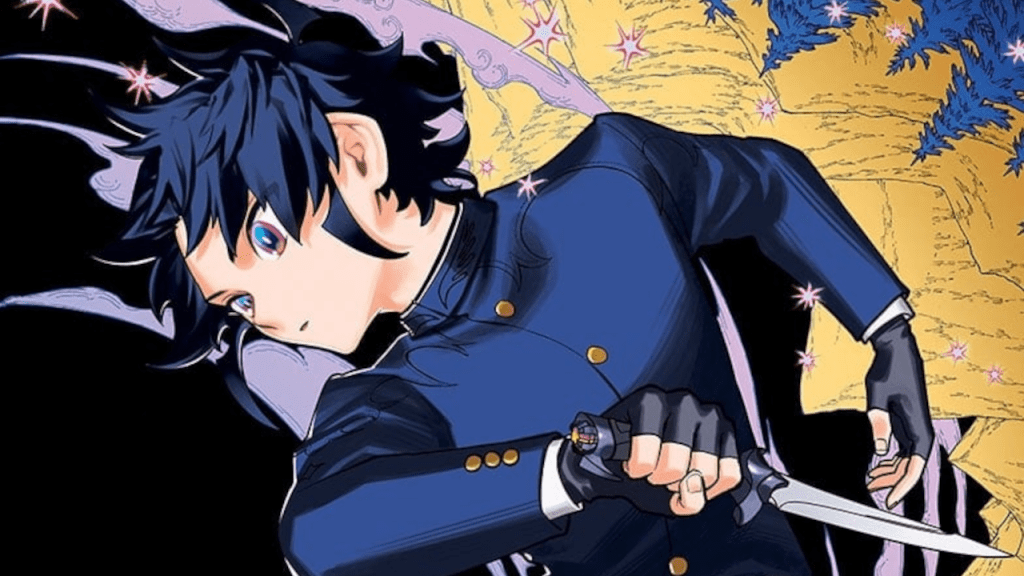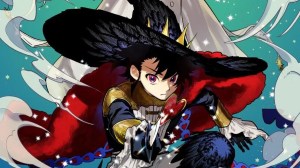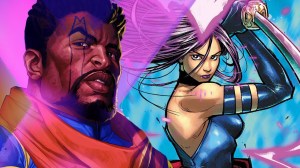Ichi the Witch is one of Shonen Jump’s best up-and-coming manga, and it might be seeking to subtly take down a Jump goliath. Although Osamu Nishi’s previous series, Welcome to Demon School, Iruma-Kun!!!, was a highly regarded comedy, it never came close to the level of praise as Ichi the Witch, which is turning out to be a surprisingly strong contender for Shonen Jump’s next top battle manga. The deft mix of humor, shonen influences, innovative storytelling, and the impressive artwork of Shiro Usazaki (formerly of Act-Age) make Ichi the Witch a must-read.
Videos by ComicBook.com
Warning: Spoilers ahead for Ichi the Witch Chapter 42!
Ichi the Witch is very early into its run, but it’s already no stranger to throwing subtle jabs at shonen conventions to pave its own way. One possible target of Ichi the Witch might just be Naruto‘s most infamous trope: “Talk-no-Jutsu”, where battles are won through communication and empathy rather than violence. Ichi just acquired a majik that absorbs and weaponizes the feelings of others, and it’s easy to imagine how it could effectively be the “anti-Talk-no-Jutsu.”
Ichi the Witch‘s Bakugami Has a Horrifying Power

The recent chapters of Ichi the Witch involved Ichi and the crew’s quest to acquire a “slumbering majik” that would apparently help Ichi prepare for his showdown with the World-Hater. The slumbering majik turned out to be a tapir who, when hugged, relieves victims of their sorrows and burdens. The tapir had turned things around entirely in the devastated kingdom of Kagami and been elevated to the level of a deity, leading the kingdom to be renamed in its honor: Bakugami.
The trick is that these were absolutely Bakugami’s intentions. Bakugami is obsessed with the World-Hater, who it wanted to offer up a grotesque massacre. Its humanoid true form, wrested within the tapir’s snout, had the plan of finding a struggling nation, winning over its people, storing their sorrows, then releasing them all at once to overwhelm the people with despair and death.
As Ichi and his new friend (and prince of Kagami) Gokuraku face off with Bakugami, the harrowing potential of its ability is realized. Years of collective sorrow are piled onto Gokuraku alone, almost causing him to lose his humanity altogether, but through some “power of friendship” antics, Ichi was able to save Gokuraku and acquire Bakugami. Watching Bakugami’s arc play out had some weird resonances with how Naruto structures its characters and its own approach to sorrow.
Naruto Made Empathy A Nonviolent Weapon

In Naruto, creator Masashi Kishimoto always made an explicit effort to open up heroes and villains alike to viewers’ empathy. Behind everything, there was always a tragedy that turned evil people evil. For example: arguably the series’ most heinous act, Pain’s ruthless assault on the shinobi world has a glimmer of motivational pathos: the tragic lives of war orphans raised in the rubble of a village constantly caught up in proxy wars. Even Orochimaru, Naruto‘s most “evil-for-the-sake-of-evil” villain, is explained through intellectual curiosity and eventually subject to an (off-screen) redemption arc following the Fourth Great Ninja War.
These efforts are very intentional. It’s evident both within the series, like the Will of Fire’s ideological emphasis on love and communication as the pathways to peace, and outside the series, like Kishimoto’s interview with French distributor Kana addressing shonen manga’s necessary role in championing sentimental idealism. Naruto takes as its founding principle an idealism that charts out humanity in everyone.
Naruto‘s “Talk-no-Jutsu” showed a very direct way of weaponizing empathy, leveraging idealism and humanity to defuse violence altogether. Where Ichi the Witch diverges with Bakugami is in leveraging sorrow to pack a punch so catastrophic it can entirely strip a target of their humanity and outright kill them with devastation. In other words: “Talk? No! Jutsu!”
Ichi the Witch Might One-Up Talk-No-Jutsu With A Terrifying Twist

It might seem like a stretch to say that Ichi the Witch is gearing up to undermine Naruto‘s idealism, but there’s already textual evidence for its future subversion of communication saving the day. The first piece of evidence is more playful. In chapter 9, Ichi’s squad confronts Uruwashi, a shark whose acquisition trial involves a challenge to make her look fabulous. Desscaras tries outsmarting the trial by appealing to “inner beauty”, saying nobody can be beautiful when they’re ugly on the inside.
Hilariously, Uruwashi interrupts her and demands she quit with the “preachy, idealistic trash.” While it’s not a Naruto callout so much as just a funny response, it’s hard not to hear it in terms of one of Shonen Jump’s most popular manga ever: the one that just happens to be so renowned for ending fights with “preachy, idealistic trash” that it spawned a meme.
That plays into the other piece of evidence, which is more on the mechanical side: put simply, there don’t seem to be any negative emotions for Ichi’s Bakugami to harvest, at least not while targeting majik. Pretty much every villain in Ichi the Witch so far has resisted any attempts at leveling or humanization. In fact, most have found empathy and sentimentality to be insulting. And for some, the possibility of humanization just isn’t there: take the World-Hater, who just exists as a force of natural calamity, meant to wipe everything and disappear (at least as far as we know right now).
So why in the world is acquiring Bakugami supposed to help Ichi prepare for the World-Hater? It’s obviously uncertain at this point how Ichi will leverage Bakugami, or even what Bakugami looks like under his control. For example, we’ve seen that harvested negativity doesn’t even have to be weaponized, which means it could be used to “suck out” a villain’s dark emotional motivations without being used to attack them directly. For that matter, when Ichi does use Bakugami, will Uroro’s Ultra Amplification amplify the harvesting or deployment of emotions, or both?
That’s precisely what makes Ichi’s acquisition of Bakugami so interesting. While Ichi the Witch fans have mostly been focused on Gokuraku joining the squad in Chapter 41 and Uroro’s vague threat to break free of Ichi in Chapter 42, Bakugami’s implications have gone criminally unnoticed, despite being Ichi’s most dangerous weapon yet. What’s clear is that whatever Ichi the Witch is planning to use Bakugami for, it’s not going to involve a whole lot of talking, let alone “preachy, idealistic trash”.
We’d love to hear from you, so if you have any ideas for how Ichi the Witch might end up using Bakugami down the line, drop a comment! Finally, if you want proof of just how much Shonen Jump loves Ichi the Witch, click through to the link below.









